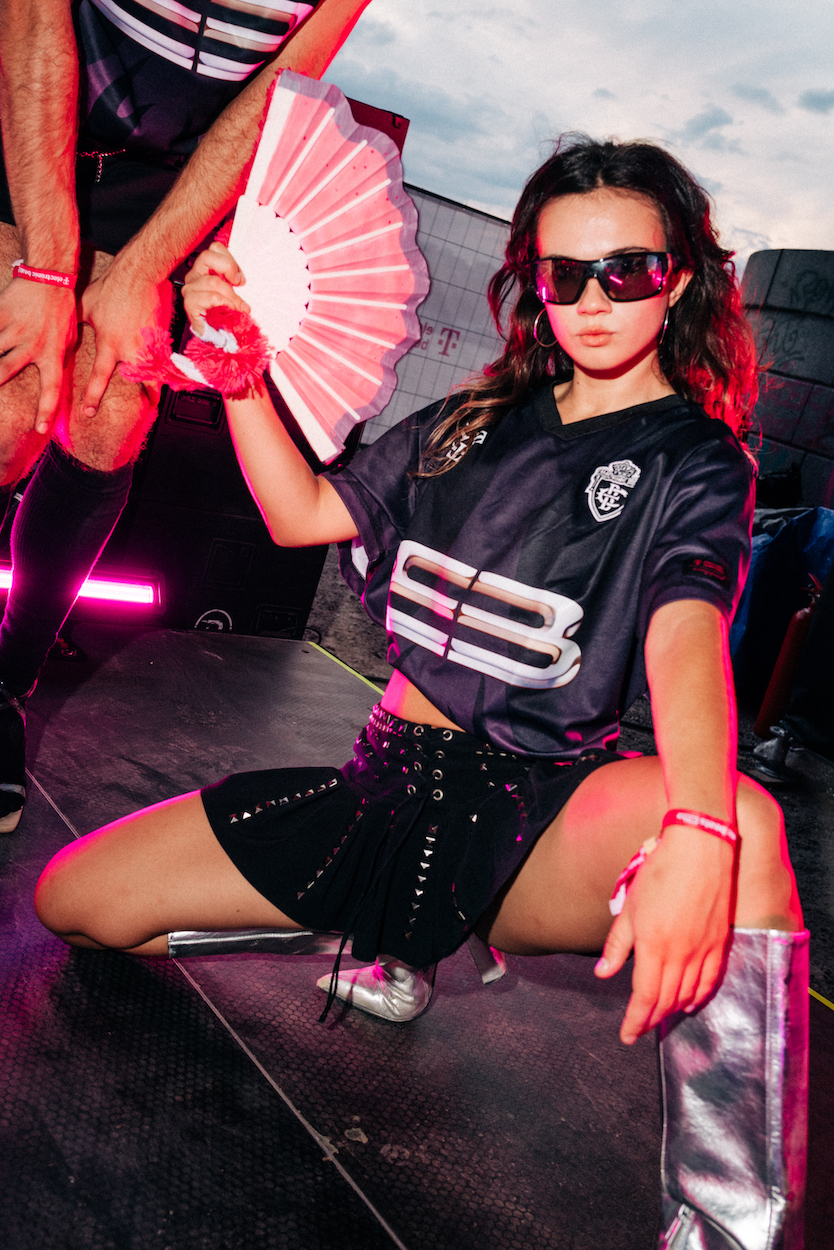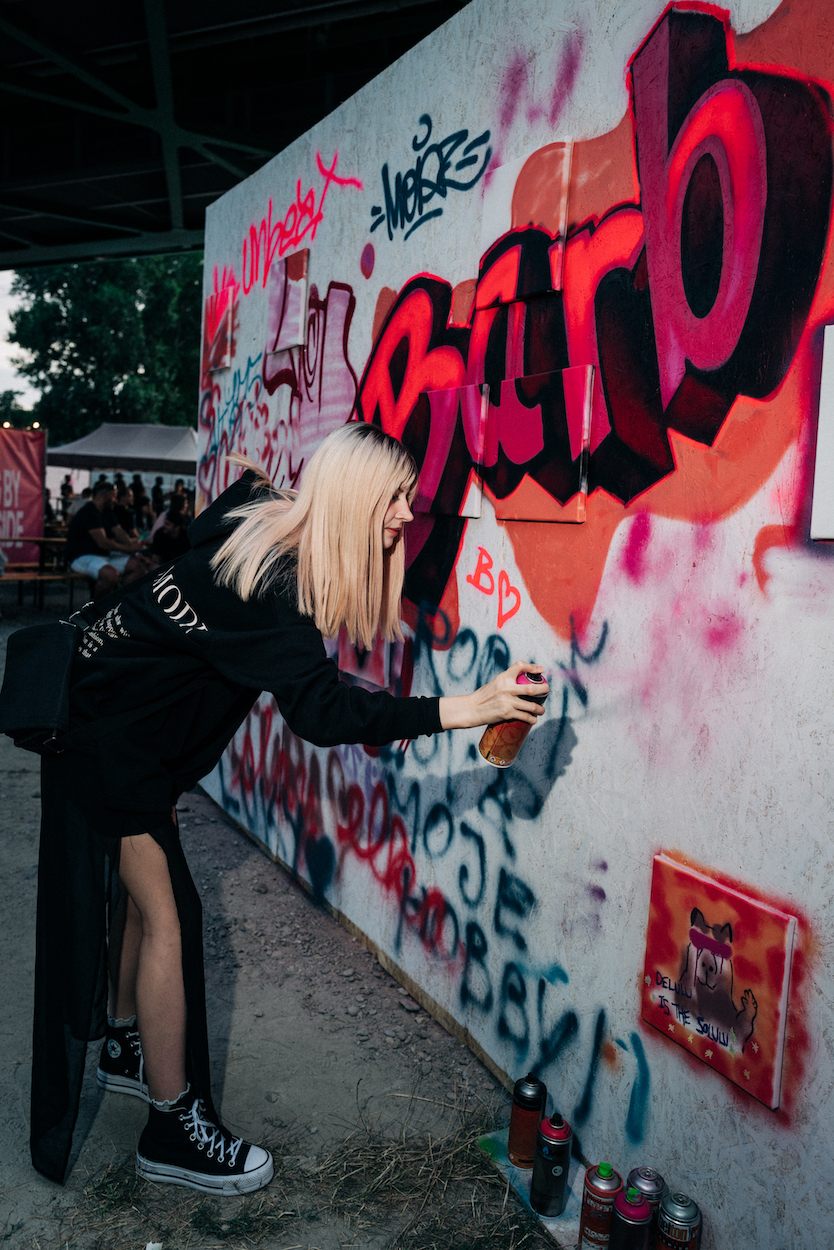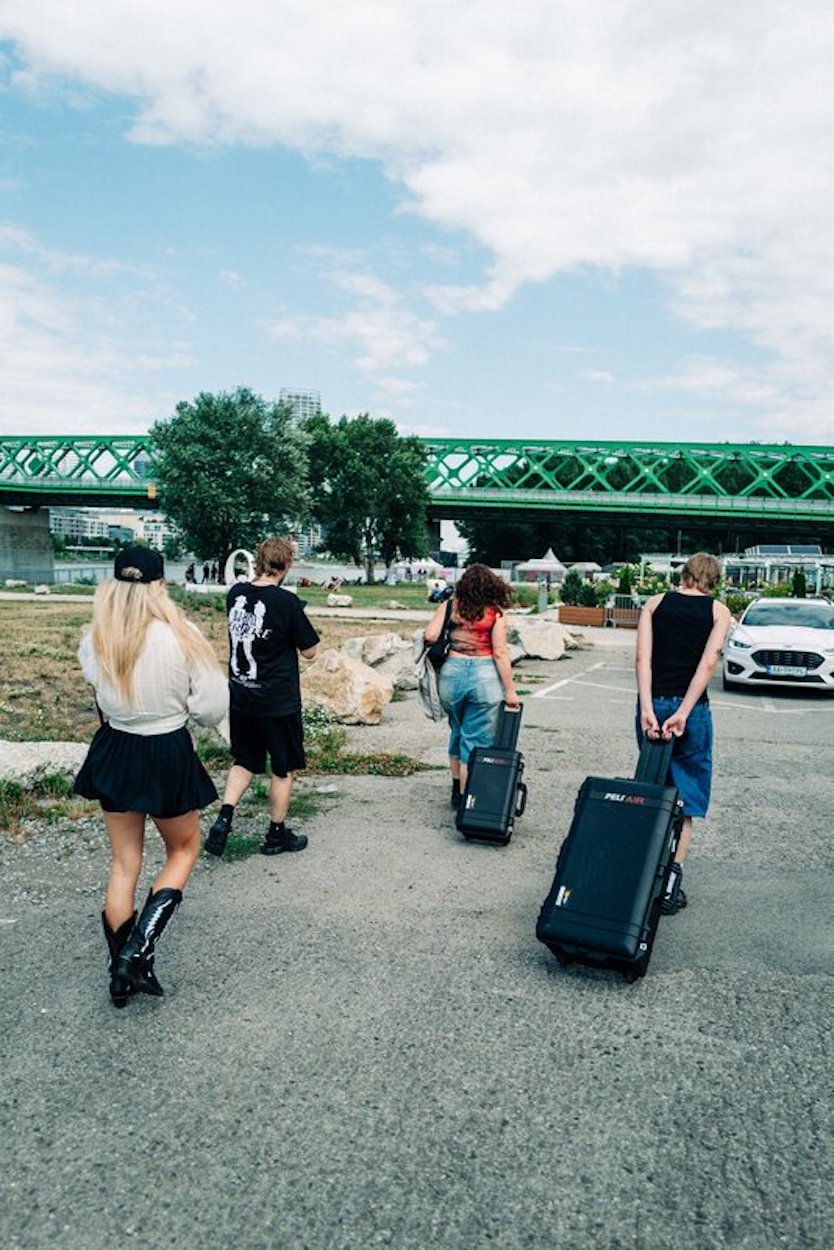“Starý most” is the name of the oldest bridge in Slovakia’s capital, Bratislava. Translation: Old Bridge. The current Old Bridge stands on the site of the former Franz Joseph Bridge (“most Františka Jozefa”), the first steel truss bridge in Bratislava, which was inaugurated in 1890/91 by Emperor Franz Joseph I himself. A drawing by Moritz Ledeli capturing this historic moment suggests that the Emperor appeared on this occasion without his – by the aristocracy’s feared but by the people beloved – consort, Empress Elisabeth of Austria, better known as “Sisi”. The scene features the saluting Emperor and the truss bridge named after him. The present model is also a steel bridge, constructed in a vaulted upper chord design, resting on five pillars. The natural stone masonry of the pillars glows in ochre yellow, with each brick individually visible. They have survived two world wars. At the time of its inauguration under Franz Joseph, Pressburg German was predominantly spoken in what is now Bratislava; the city was the second most industrialized in the Kingdom of Hungary, right behind Budapest. The current “Starý most” was built in 1945 by German prisoners of war under the guidance of the Red Army, shortly after the end of the Second World War.
The Danube flows between the massive natural stone pillars, carrying away memories, debris, and gravel. Between 1945 and 1972, “Starý most” was the only bridge spanning the Danube in Bratislava.
Under this very Old Bridge, Telekom Electronic Beats called upon Slovak youth to experience one of their festivals spread across Eastern and Central Europe. This festival series is part of the “Summer of Youth” campaign, which in Bratislava features local talents such as Neraev, Microchic, wyme, and Murkezzi, framed by international stars like Elli Acula, Ki/Ki, and horsegiirL as the final headliner. Electronic Beats, which has been documenting and shaping the history of electronic music in both the USA and Central and Eastern Europe for decades, repeatedly curates events where locally known DJs step into the international spotlight, paving the way for both trends and individual personalities. The timing of the all-female-curated lineup in Bratislava could hardly be more fitting.
On the way to Bratislava, two young women at the gate discuss the feminist theme of the summer while hunched over their phones. The pixelated typography on the neon green, monochrome cover sounds like an overdriven scream: “brat” is boldly but unassumingly displayed. Charlie XCX has delivered an identity with her latest album that still has to decide whether it will be timeless or just a hype. It would be embarrassing to explain “brat” or the “brat summer” at this point. Charlie XCX has declared Kamala Harris a Brat, Kamala HQ has incorporated the brat-green into their logo, journalist Victoria Reich has brought the topic into the German-speaking world, and anyone who hasn’t yet read the belated articles from FAZ and Süddeutsche should now refrain from jumping on the bandwagon. As I learned at the airport, Mahoro Seward has explained in Vogue why he has declared the Brat Summer to be over. Exactly on that same day. Since the Instagram account of the German party “Bündnis 90/Die Grünen” has updated its logo in line with Charlie XCX’s new album and been declared “Bratnis 90/Die Geilen”, “Brat” is officially uncool again. Moreover, those raised in a Slavic language might wonder why the feminist summer is represented by “Brat” rather than “Sestra”. But that’s another story.
Upon arriving in the Slovak capital, it quickly becomes clear that this unassuming town is not the Brat capital. The Peace Square, paved with Italian terrazzo, ironically looks like it’s straight out of a Soviet propaganda film. Brutalist system buildings flank a square whose center is marked by a jungle of monumental, constructivist fountains. Families with children, teenagers, and couples mill around this literal urban oasis, splashing and reveling in the new wave of enthusiasm in Bratislava. On this square, where demonstrations had long been suppressed and dispersed out of fear of a popular uprising, the Pride now takes place. Our city guide, an architect himself, describes Bratislava as a “goulash”.
“Sisi” was also a great admirer of both Hungarian cities and the current Slovak capital, Bratislava. Although Elisabeth, as the newly wedded Empress, was initially seen as a pale and shy girl—she married at the age of 16—she quickly established herself at court as a skilled diplomat and social bridge-builder. She was appreciated for her open but sincere nature and feared for her politely confrontational stance. Elisabeth of Austria-Hungary was likely as “Brat” as an environment like the aristocratic court allowed.
Under the “Starý most”, the truss vibrates from the afternoon hours onward. Baggy jeans, crop tops, and small Diesel jeans handbags gather here like in a Y2K “Wimmelbild”, a German visual-based hidden object challenge. A young woman sprays “Fuck Life” on the designated wall and dots the i with a heart. This sight reminds me that Czech rock star Jiří Schelinger ended his life with a jump from the “Starý most”. Numerous myths surround his death: secret service, men’s bets, or perhaps the disillusioned love for Iva Janžurová? Resonating with the nostalgia of the Danube waves, I hope that the Brat Summer isn’t over here yet. This hope is rewarded just a few days later when Charlie XCX kicks off the next chapter of the Brat Summer with “brat and it’s the same but there’s three more songs so it’s not” and the surprise feature with Billie Eilish on “Guess”. Victoria Reich confirmed: The hype lives on.
On the return journey, passengers at the airport discuss maritime influences on the English language. “All hands on deck”, “Loose Canon”, “High and Dry”, “Leeway”—all from shipping, because the English and other nations migrated across the ocean. All seafarers. But today, all of this is forgotten—seafaring, language. Quietly, I think to myself: Even the history of an Old Bridge fades from the cultural memory of a globalized society. Just as “water under the bridge” as the Danube beneath the “Starý most”. The fact that Sisi evaded courtly obligations with her emancipated self-will and devoted herself to her interests, self-education, and travel as often as she wished, with the Emperor delighted by every contact and visit from the Empress, is scarcely a topic in this Brat Summer. But why should it be? The groundwork laid by Sisi and all the Brats of the last centuries and decades may seep as subtly but inevitably into the collective consciousness as maritime jargon into the English language. And perhaps there will come a summer when “being Brat” not only functions as a hype or a good marketing move in the context of an election campaign but also as a genuine attitude.



